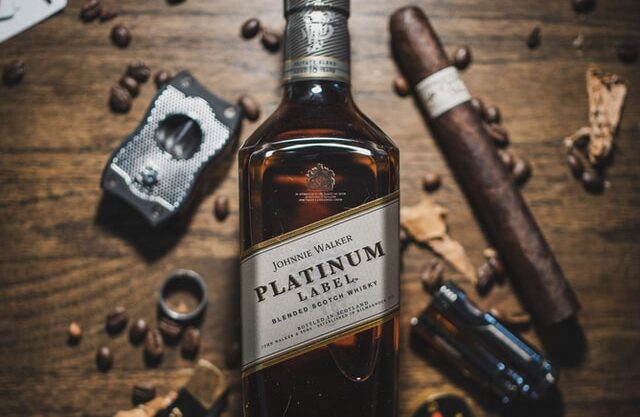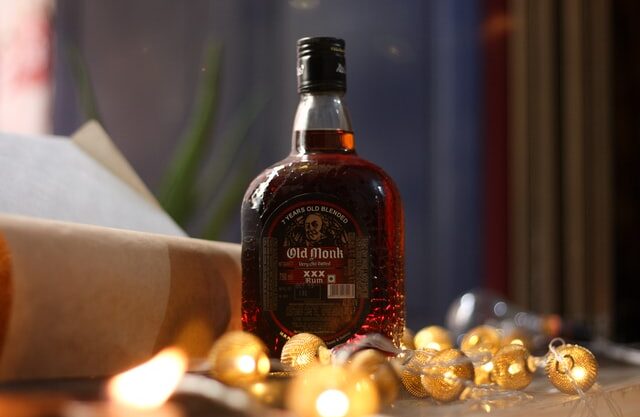

The highly adaptive business model of Mavalli Tiffin Rooms a.k.a MTR Foods
Being born and brought up in a South Indian family has always meant an unlimited stock of dosa batter and filter coffee decoction. Strangely, Rava/semolina dosa and idli have always been an occasional luxury. Rava upma was certainly regular, but idli always meant the usual white-washed chunks of mashed rice. It got me thinking, was Rava/semolina idli and dosa not as much a part of the South Indian traditional spread?
Rava idli is an outcome of the ultimate crisis, though it has managed to become an infrequent delight in many households. When the world was battling in the early 1940s (World War II), some survival alterations led to an unexpected shift in the category with the birth of Rava idli.
Agility and Innovation, the heart of MTR Business Model
Rava idli, the popular occasional indulgence in many South Indian households was a result of geniuses at work. The period of crisis nudged the famous and well-established Mavalli Tiffin Rooms of Bangalore to replace the over-consumed rice with semolina due to the scarcity of rice.
The then owner and soul of the restaurant, Mr.Yagnanarayana Maiya, an exceptional cook, is to be credited fully for redefining the boundaries of the ‘South Indian breakfast & snacks’ category. Thus arrived steaming hot Rava idlis with freshly ground coconut chutney and tangy potato saagu, topped with a sumptuous amount of ghee .
View this post on Instagram A post shared by MTR Foods (@mtr_foods)
The success of Mavalli Tiffin Rooms is not credited to the emergence of Rava idlis alone. The art of leveraging opportunities as the business stepped further helped the restaurant become the top-rated and familiar MTR Foods.
Club it with identifying the correct cultural practices, and your product will sell and be accepted widely, just like MTR packets reside in most parts of the world.
Today, MTR Foods has been taken over by the Norwegian foods-to-metals group Orkla for smoother management purposes. The group’s ready-to-eat delicacies continue to be the ultimate go-to item to pack for every Indian flying out of the country.
Orkla already holds a strong position in the Indian branded food market MTR brand, which has grown its sales five-fold since Orkla acquired it in 2007. For the last 12 months ending 30 June 2020, MTR had a turnover of INR 9.2 billion . In addition to having seen strong domestic growth, its presence has been expanded to 32 countries around the world, with North America, Australia, and New Zealand being the major markets.
How did a brand manage to become so trusted and dependable? How did a mere restaurant go from a single outlet to having a worldwide presence? How did packed food become a replacement for mother’s hand-cooked food? How did a bowl of food become a meal of nostalgia for every Indian residing outside the country?
MTR Foods: Redefining the business model through processed foods
Mavalli Tiffin Rooms, formerly known as Brahmin’s Coffee Bar, has been in existence since 1924. Like every other restaurant on the streets of the young Indian city of Bangalore, Mavalli Tiffin Rooms also served authentic South Indian snacks and meals of all kinds.
In the early 1970s, when a state of emergency was declared, all well-established restaurants were asked to slash their prices. While competition cut down on quality, employees, or other expenses to not compromise on profit margins, Mavalli Tiffin Rooms took the bold step to retain their working standards to continue delivering quality to their customers.
Not only did they stick to their standards of offering, but the restaurant also diversified and started offering pre-made mixes for customers to make what they would have otherwise dined at the restaurant. The strategy gave birth to a new business model of MTR: The packaged food.
This gave the restaurant a window view into the category of processed foods before actually stepping in. While Mavalli Tiffin Rooms retained the old-world charm of partitioned steel plates, a hustling eatery environment, and an aromatic open kitchen, MTR Foods steadily took over the ‘ready to eat’ segment, which was crowded by western variants for the longest time.
It might have most certainly be challenging to cater to two opposite ends of the market- freshly cooked and instantly cooked. Perhaps, two different life stages, too, pertaining to distinct age brackets and mindsets.
In 1994, the MTR management decided to tackle the conundrums of these dividing interests by heading in two separate directions- the restaurant chain and the packaged food chain became separate verticals of the business model.
Today, Mavalli Tiffin Rooms is present in 9 locations in Bangalore, 1 in Udupi, 1 in Singapore, 2 in Dubai, and 1 in Kuala Lumpur, while MTR Foods exports to a total of 32 countries including the United States, United Kingdom, Middle- East, Japan, Canada, Australia, Germany, New Zealand Singapore, Malaysia, Mauritius, and many others.
The MTR Foods range comprises of ready-to-eat range, vermicelli, spices & masalas, beverages, dessert mixes, confectionery, and pickles.
Practices that redefined the category boundaries
Though at present, the Indian market has many players in the processed food segment, MTR’s role in shaping the potential of the category can never be undermined or discounted. There is also another successful player in packaged food that is ruling the market with its innovative yet simplistic approach, ID Fresh.
In 2019, the brand had a share of a whopping 900 Cr, with a CAGR of more than 14% , and most importantly, managed to hold immense value in the hearts of many.
The brand was thoroughly focused on what it needs to deliver, their strong value proposition of selling culture-induced Indian food variants in multiple SKUs worked wonders for them. Having a thorough understanding of the predominantly prepared Indian delicacies and with a strong vision of keeping the relevance of the cuisine intact, the scope of expanding the business model of MTR has always been crystal clear.
Any preparation that fell in the ‘Indian meal’ bucket, MTR took on to instantify it instantly. The brand audaciously said NO to any preparation that did not belong to the meal bucket.
Consistency is the king of all competencies
What’s further a moment of awe is to see how consistently the brand has evolved with progressing times. As they spotted a demographic shift, the three-minute breakfast series was launched in 2017 to keep up with the fast-paced lives of the millennials. Backing the product range with the consumer insight of breakfast being the most rushed or skipped meal, the breakfast range surely was a huge success.
The organized breakfast market in India is driven by a need for convenience with consumers sometimes compromising on what they would like to eat for quicker options. Most Indians at a breakfast buffet choose Indian food with similar behavior being observed in college canteens and train stations. Yet, the same people, when they are at home and in a hurry on a weekday morning, choose a bowl of cereal and milk just because it’s quicker and more convenient than Indian breakfast. The MTR 3 Minute Breakfast will now give Indians easy access to a hot, comforting range of Indian breakfast dishes in just 3 minutes. On the launch of the 3-mins series, Sanjay Sharma, CEO, MTR Foods
For a brand of such size and stature, MTR Foods made sure to frequently touch base with the customers by hearing them out, their ways of preparing a delicacy have been of utmost importance while crafting a new product. Sanjay during an interview mentioned,
We have a 100-years legacy; we are known as people who know food. But we don’t rest on our laurels — we have a dedicated team of five to six chefs working on recipes. For a sambar, we spent four years finding out the denominator that matches across millions of households. We visited 3,500 consumers before we came up with the recipe.
Experience MTR, in its truest form
The brand has invested in two signature outlets named Namma MTR, in Bangalore that spoke for everything the brand stood for. Right from a live cooking counter to demonstrate how easy it is to cook great-tasting authentic food using MTR products, Namma MTR provides a modern retail experience without losing sight of its authentic roots.
Some food for thought!
It is very clearly established that trust and credibility are assets built over time, something that takes immense amounts of energy, consistency, and a strong vision.
While it might be easier to deliver a product, delivering a wholesome and authentic experience is what brand building truly is. MTR has exhibited all formats of strategic brand building in its successful business model.
The century-old business didn’t merely survive on traditional ways of flourishing but also constantly took into account the frequently evolving environment to sustain at being relevant and staying true to their purpose of existence.
-AMAZONPOLLY-ONLYWORDS-START-
Also, check out our most loved stories below

Why did Michelin, a tire company, decide to rate restaurants?
Is ‘Michelin Star’ by the same Michelin that sells tires, yes, it is! But Why? How a tire company evaluations became most coveted in the culinary industry?

Bajaj Auto: The Story of an Indian Born Global Brand
Bajaj Auto has evolved tremendously over time from its traditional scooter Chetak to having the trendiest bike Pulsar. It has managed to stay relevant.

Jio’s Offensive Marketing Warfare: From Challenger to Leader
In just 4 years Reliance Jio has become the Indian telecom market leader due to its marketing warfare strategies. What is this strategy and how Jio used it?

Johnnie Walker – The legend that keeps walking!
Johnnie Walker is a 200 years old brand but it is still going strong with its marketing strategies and bold attitude to challenge the conventional norms.

Flipsters: Creating the Butterfly effect in Indian Startup Ecosystem
How is it that ex-Flipkart employees or Flipsters as they call themselves have achieved such massive success in the Indian Startup Ecosystem?

Nike doesn’t sell shoes. It sells an idea!!
Nike has built one of the most powerful brands in the world through its benefit based marketing strategy. What is this strategy and how Nike has used it?

Domino’s is not a pizza delivery company. What is it then?
How one step towards digital transformation completely changed the brand perception of Domino’s from a pizza delivery company to a technology company?

Why Indians love Old Monk? What is the revival plan of the dying brand?
Indians especially armed forces and college students for generations have loved Old Monk. What makes this rum so special? It’s classy, dark yet affordable.

IKEA- The new master of Glocalization in India?
IKEA is a global giant. But for India, the brand modified its business strategies. The adaptation strategy by a global brand is called Glocalization
-AMAZONPOLLY-ONLYWORDS-END-

Shraddha is a Bangalore-based Strategist and freelance writer. She has a knack for decoding human behaviors impacting collective culture and a passion for sustainable planning and storytelling.
Related Posts

How does Instacart work and make money: Business Model

What does Zscaler do | How does Zscaler work | Business Model

What does Chegg do | How does Chegg work | Business Model

What does Bill.com do | How does Bill.com work | Business Model

What does Cricut do | How does Cricut work | Business Model


What does DexCom do? How does DexCom business work?

What does CarMax do? How does CarMax business work?

What does Paycom do? How does Paycom work?
What does FedEx do | How does FedEx work | Business Model

How does Rumble work and make money: Business Model

Dollar General Business Model & Supply Chain Explained

What does C3 AI do | Business Model Explained

What does Aflac do| How does Aflac work| Business Model

How does Booking.com work and make money: Business Model

What does Okta do | How does Okta work | Business Model

What does Alteryx do | How does Alteryx work | Business Model
Write a comment cancel reply.
Save my name, email, and website in this browser for the next time I comment.
- Advanced Strategies
- Brand Marketing
- Digital Marketing
- Luxury Business
- Startup Strategies
- 1 Minute Strategy Stories
- Business Or Revenue Model
- Forward Thinking Strategies
- Infographics
- Publish & Promote Your Article
- Write Article
- Testimonials
- TSS Programs
- Fight Against Covid
- Privacy Policy
- Terms and condition
- Refund/Cancellation Policy
- Master Sessions
- Live Courses
- Playbook & Guides
Type above and press Enter to search. Press Esc to cancel.
Search code, repositories, users, issues, pull requests...
Provide feedback.
We read every piece of feedback, and take your input very seriously.
Saved searches
Use saved searches to filter your results more quickly.
To see all available qualifiers, see our documentation .
- Notifications
Akhilsimhaj/MTR-marketing-marvel--case-study-
Folders and files, repository files navigation, mtr-marketing-marvel--case-study-.

MTR foods is a successful company due to continuous marketing activities by focusing on the customer's requirements and creating products satisfying the customer's needs wants and demands In past MTR foods (erstwhile MTR Tiffins) was doing marketing activity in emergency situations by introducing new and different products as MTR masala powders. It shows that the legacy of the MTR company as Marketing Orientation by catering to needs of customers and providing products matching with their needs.
Its a reality that any company or business entity doesn't operate in isolation but driven by environment parameters Known as PESTEL or SLEPT factors S-Social L-Legal. E-Economical, P-Political T-technological.
MTR foods operated in the food industry environment with quality as a product or USP to attract and retain customer." Any company or business unit is successful in strategy when it is able to map its internal resources with external environment and create value for customers in the nue to the company. In this contest, MTR company has legacy of "Marketing strategy thinking in the food industry for seven and a half decades. process reves
Here is an illustration of the MTR company's ability to identify opportunity from the dynamic
external environment (SLEPT) and providing a gamut of successful business reorientations by
evolutions from MTR Tillin's MTR foods by creating products like Ready-To-Make (RTM) Masala
ingredients, Ready to cook (RTC) like upma, idli, dosa, etc.
We can say that MTR is a marketing marvel because of its ability to understand the industry environment demand drivers that dominates food industry Le food habits and food consumption of consumer, and based on that, was able to create appropriate the marketing mix (Annxeure-11) elements -4Ps Product, Price place, and promotion." We explore and understand the MTR as a marketing marvel case in the above context.
THE INDIAN FOOD INDUSTRY ENVIRONMENT: A SNAPSHOT
The Indian food industry growth is increasing every year (Data provided in Annexure-III) An opportunity for immense potential for value addition, particularly within the food processing indus- try, the food sector has emerged as a high-growth and high-profit sector. The food industry, which is currently valued at US$ 39.71 billion!, is expected to grow at a Compounded Annual Growth Rate (CAGR) of 11% to US$ 65.4 billion by 2018. Food and grocery account for around 31% of India's consumption basket. Accounting for about 32% of the country's total food market. The Government of India has been instrumental in the growth and development of the food processing industry.
The government thegh the Ministry of Food Processing bites (MF) etons to encourage investments in the business. It has approp foreign collaborations and indooral The Indian food process the country's total food market, one of the largest industries in India and is ranked filin industry cis for production consumption, export, and expected growth. It contributes and 14 of m ng Gro Domestic Product (GDP), 13% of India's exports and 6 of total indl Indian food service industry is expected to reach US$ 78 billion by 2018. The Indian market is currently valued at US$ 1.3 billion and is growing at a Compound Annual Geth Kate (CAGR) of 20% India's organic food market is expected to increase by three times by 2020
Food Industry & Trends
The online food ordering business in India is in its stage, but witnessing exponential growth The organized food business in India is worth US$ 48 billion, of which food delivery is valued at US$ 15 billion. With online food delivery players like FoodPanda, Zomato, TinyOwl, and Swiggy building scale through partnerships, the organised food business has a huge potential and a promising future The online food delivery industry grew at 150% year-on-year with an estimated Gross Merchand Value (GMV) of US$ 300 million in 2016. According to the data provided by the Department of Industrial Policies and Promotion (DIPP), the food processing sector in India has received around US$ 7.47 billion worth of Foreign Direct Investment (FDI) during the period April 2000-December 2016 The Confederation of Indian Industry (CII) estimates that the food processing sectors have the potential to attract as much as US$ 33 billion of investment over the next 10 years and also to gener ate employment of nine million person-days Mr Tomasz Lukaszuk, the Ambassador of the Republic of Poland, had also highlighted the keen interest shown by Polish companies looking for opportuns- ties in India to expand collaboration and invest food processing (Annexure 1)
Government Initiatives Food sector
There are various government initiatives taken to support Indian food industry in recent budgets so that an economic fillip given to this industry. The gamut of operations areas covered are from quality control, regulations to promotional board of investment from FDI, and encouraging entrepreneurs in this industry. This government initative gives a direction to industry to sustain in long term with particulars quality standards. (Refer Annexure IV for details)
COMPANY EVOLUTION MTR FOODS - MAVALLI TIFFIN ROOMS TO MTR FOODS
The Mavalli Tiffin Rooms (commonly known as MTR) is the brand name of a food-related ente prise located in India. Having its origin in the city of Bangalore, it has a restaurant located on Lal Bagh Road in Bangalore and 6 other branches in the city, as well as one each in Singape Dubal, and Muscat. MTR also claims to be the inventor of the popular South-Indian break tem, Rava idli. MTR was founded as a restaurant by Yagnanarayana Maiya and his brother 924. In the mid-1970s when India was under emergency, a Food Control Act was introduced which mandated that food was to be sold at very low prices. This move made a difficult for MTR to maintain high standards in its restaurant business and forced it to divenly into the instant food business, selling ready-to-eat snacks such chutneys and rasams. Since the 1970s, MTR has expanded and diversified, with MTR Deparment Stores opened next to the restaurant, and an outlet opened in Chennai. Currently the MTR brand represents two separate entities; the MTR restaurant business and MTR Fox, the pre-packaged food business. MTR Restaurant is a vegetar ian restaurant located in Bangalore, India. It was founded in 1924. It has also been featured on television in the global travel-related series, Globe Trekker. The food served at the MTR is a regular wholesome Karnataka Brahmin fare and has its origins in the Udupi Brahmin cuisine of the coastal region of Karnataka. The decor is outdated, as more attention is paid to cleanliness and food quality than ambiance. For many years, the customers entered the restaurant through the kitchen so that they would be able to satisfy themselves about the restaurant's cleanliness before they ate there. During World War II, MTR found it difficult to make idlis since rice was in short supply. According to MTR, they experimented with semolina instead of rice and thus invented the very popular breakfast item of Rava Idli. MTR also holds a record of being the first fast food restaurant in the world to serve 21,000 customers in seven hours. MTR restaurant is currently headed by Hemamalini Malya, Vikram Maiya, and Arvind Malya (grand children of Yajnanarayana Maiya). One unique ness of this restaurant is that silver tumblers are used to serve beverages.
This restaurant was closed in the period of Indian emergency (mid 1970s) when the Food Control Act made it non-profitable to serve food items until it was reopened in 1984. To save the jobs during the time it was closed, MTR started selling spices and roasted flour mixes. That was the beginning of us entry into the convenience and instant food business, and in a sense, a turning point. MTR Foods was headed by Sadanand Maiya (son of Yajnanarayana Malya) until it was sold to Orkla, a Norwegian company for $80 Million in March 2007. It produces packaged foods in different ranges-spices, instant mixes, ready-to-eat foods, vermicelli, ready-to-cook gravies, range of frozen products, papads, pickles, chips, snacks, and ice creams. It bought the packaging technology from the Defence Food Re- search Laboratory in Mysore and there are no preservatives added to the food while packaging. MTR is also the first Indian processed foods company to be certified with the Hazard Analysis Critical Con- trol Point (HACCP) certification which is a rigorous standard of food safety and hygiene. It has also been sponsoring magic shows and theatre performances a means of giving live demonstrations of their products and to hand out free samples to the audience. MTR Foods is also the first company in the world to have created a frozen dosa, which can be heated and eaten right away. MTR Food products are exported to the countries in the Persian Gulf, United States, and United Kingdom. It is believed that MTR is the one who brought the first ice cream vending machine to India.
MARKETING MIX PERSPECTIVE OF MTR FOODS
MTR foods a Product Dominant Company
MTR Foods is a food product company offering a diversified range of packaged food products. It uses authentic recipes, high-quality oil, and best ingredients to retain and ensure homemade aroma, taste, and flavor. Products are prepared in the strict hygienic atmosphere so that packs retain crispiness and freshness I includes Rests low breakian, meals, and b-between meals like Foods The above company hacklog shows MTR as a company that consoly ove Produces product with match of consumer needs wants and demands Product efforts are Qoy strength to amact and retain customers. The haine work of "Customer Vs Product matching this company can be understood as marketing marvel Company. (eler Annexure V for Prodans To enable has Product Company MTK focused on "Prostat & Quality certifications by difere Food quality Regulators FSSAI This company has concentrated on single product line." based on different features, benefits, quality, variety items, and assortments. In this process of prod uct assortment of the company, it is able to create value to the customer. This is done with a strong quality assurance system and conification. Product mix of the company is able to generate sufficient revenues for the business of the product. Product Proble
Place in the Marketing Mix of MTR Foods Place in marketing mix means dismbution or channel for selling the products. Here for MTK food they used its own MTR uffin centers to sell the products then started selling through other retail shops MTR is spread it business in different parts of the worlds starting from Bengaluru as its headquarte in Kamataka. Its products are exported to several countries in world market like Singapore, Malaysi Maurits Japan, Middle-East, New Zealand, Australia, Germany, United Kingdom, Canada, and the United States MTR has alus opened its fast-food restaurants on franchisee concept called MTR Super Shops and these are located in most cities and towns of India. It has seven facilities to conduct manufacturing process. It has a strong and extensive distribution network that includes services of distribuces and retailers. Its products are easily available to consumers through its own stores and e super markets, hyper markets, discount stones, convenience stores and grocery stores MTR Foods has Launched as e-commerce plation from Bangalore as a venire to move with changing times. Online selling is escommerce platform for company and its comes under place in marketing mix elements
Promotion in the Marketing Mix of MTR Foods
Promotion is the tool in marketing to make customer aware inform and create a positive ATTITUDE towards company and products. The tools of promotion that includes advertising, personal-selling sales promotions and publicity are given in (Annexure 11). MTR Foods is pursuing an aggressive and neve marketing strategy at regional, national and international levels. It has organized sampling activities at popular places and launched several ad campaigns via television, magazines, newspa pers, and social media platforms to gamer maxmum coverage. It has collaborated with Jiggs Kaira celebrity chef, to increase its brand visibly MTR Foods in the year 2002 was awarded ISO 9002 certification as it successfully met the food hygiene and safety standards in the international atena It was the first company in India to receive an award for Technology Absorption by P
Price in the Marketing Mix Of MTR Foods
Price is the last one marketer discusses but its critical one when compared all other marketing s elements. As all other elements are cost-inculcating factors but price is the revenue generators. Price with together product creates value for customer MTR follows the differential pricing for each
benefits, features it adds (Refer Annexure II for various Price methods). MTR Foods in ninet as rupees 700-crore company with a growth rate at 18% CAGR Ins espurs account for ly 20% and sales in Southern states to 60% of its total revenues MTR Foods has adopted a marke penetration pricing policy and has implemented reasonable rates for its products, Pocker-friendly and affordable rates will help the company in reaching further markets. MTR Foods has launched its web portal as a much-needed initiative to garner larger profits as it will be able to cut down on its distribution costs. It has also implemented promotional policies and offers incentives like 20% extra product with the original "The filth P of marketing mix is packaging is dominant by this MTF company as its product-based firm and food-based industry.
► ROAD AHEAD
Going forward, the adoption of food safety and quality assurance mechanisms such as Total Quality Management (TQM) including ISO 9000, ISO 22000, Hazard Analysis and Critical Control Points (HACCP), Good Manufacturing Practices (GMP) and Good Hygienic Practices (CHP) by the food processing industry offers several benefits. It would enable adherence to ringent quality and hygiene norms and thereby protect consumer health, prepare the indus try to face global competition, enhance product acceptance by overseas buyers and keep the industry technologically abreast of international best practices As Peter Drucker, The Father of Management, says that The main aim of marketing is to make selling redundant. MTR is able to provide products matching over shooting the expectations needs wants and demands of custom- ens as per frame work and able to create the Customer delight and customer loyalty Through its philosophy of Quality as USP. We hope MTR sustains its marketing marvel even in new regime of globalization in digital world.

IMAGES
VIDEO
COMMENTS
CASE 1 MTR FOODS-A MARKETING MARVEL 1. Introduction 1. The Indian Food Industry Environment: A Snapshot 1. Company Evolution MTR Foods - Mavalli Tiffin Rooms to MTR Foods 1. Marketing Mix Perspective of MTR Foods 1. Road Ahead 1. DELIVERED 2. CASE 2 CUSTOMER VALUE – EXPLORED, CREATED, COMMUNICATED & India’s e-commerce Space 2.
Contribute to Akhilsimhaj/MTR-marketing-marvel--case-study- development by creating an account on GitHub.